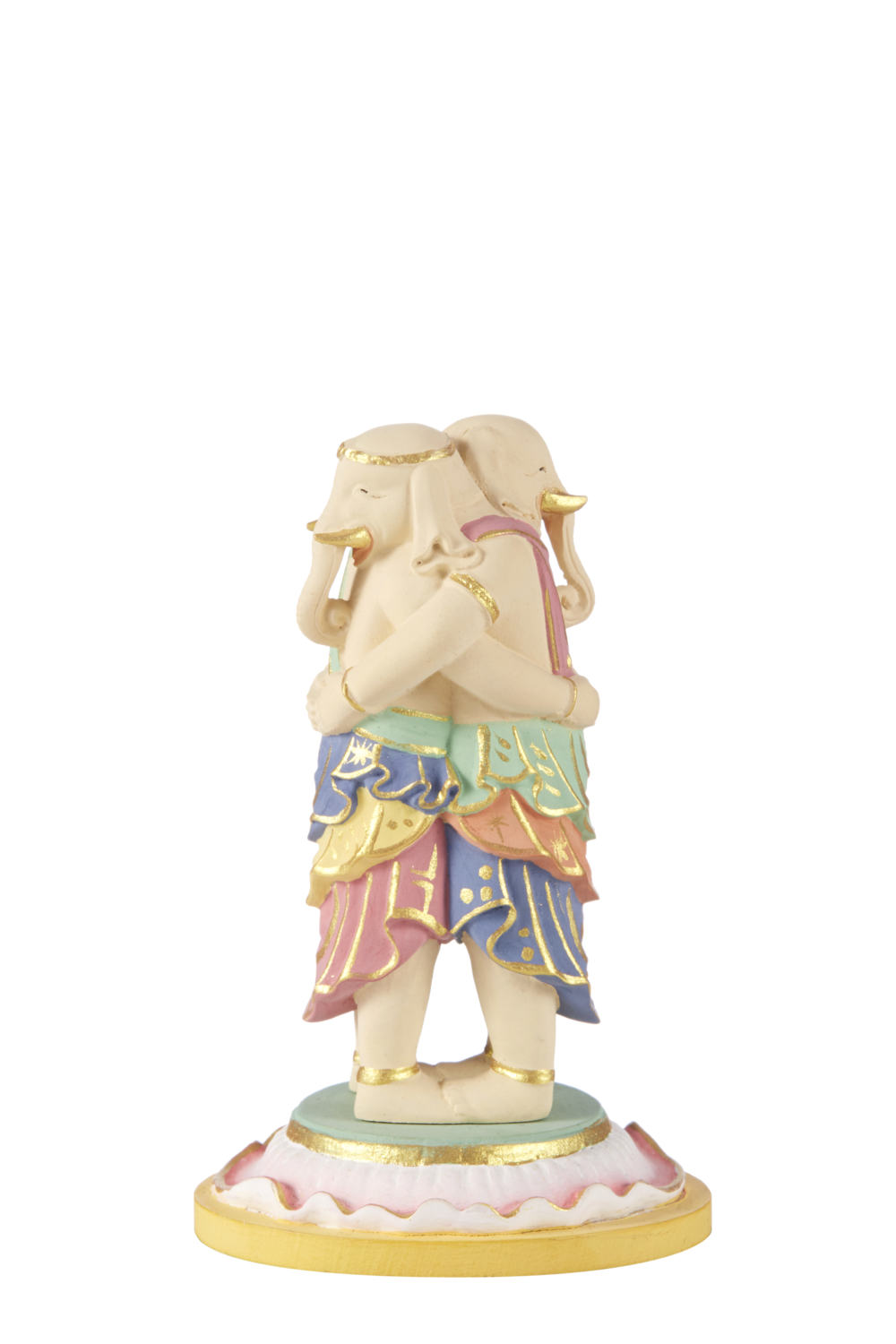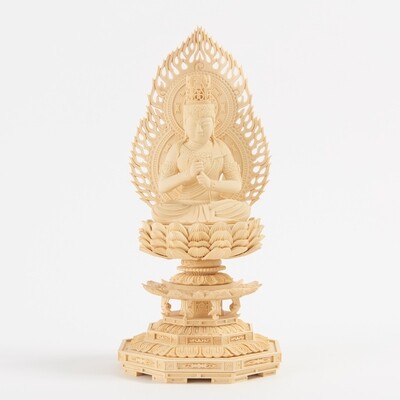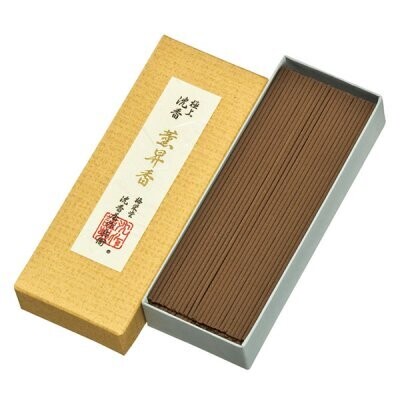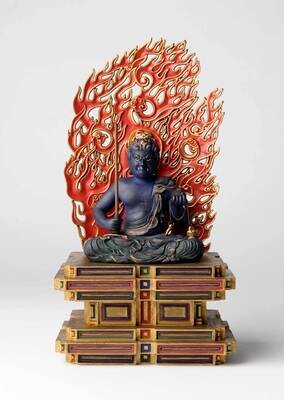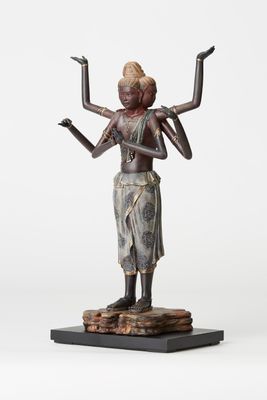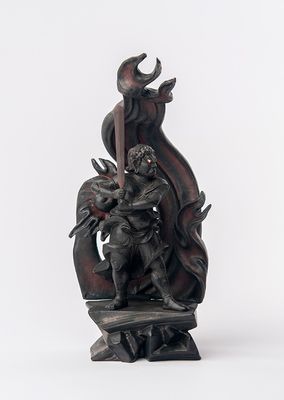Kangi-ten (彩色歓喜天)
This unusually shaped deity has the head of an elephant and the body of a man, and can be depicted as having either one or two bodies. Two common configurations are that of a single bodied deity with the head of an elephant and a dual-bodied god where the two bodies embrace each other. Dual-bodied statues included those with two bodies standing side by side and those with two bodies embracing, symbolic of a man and woman hugging each other. Said to be a strong object of faith, particularly among merchant families, the god assists in gaining wealth and status, marital harmony, in having children, and avoiding the misfortune of sickness.
Saishiki Kange-ten (Colorful Kange-ten) is a colored version of Kange-ten, a bodhisattva known for bringing joy and happiness. Saishiki Kange-ten is an essential figure in Japanese Esoteric Buddhism and symbolizes happiness, joy, and aesthetic values.
Typically, Saishiki Kange-ten is depicted as a beautiful female figure, characterized by vibrant and colorful attire. Her exquisite clothing and adornments signify her role as a bodhisattva of happiness and joy, and her appearance is meant to inspire a sense of happiness in her devotees.
Saishiki Kange-ten is often portrayed holding a precious gem, known as a "hōju" (宝珠) in Japanese. This gem symbolizes the power to grant wishes, and it is used by devotees when praying for happiness and joy. The precious gem held by Saishiki Kange-ten serves as a symbolic representation of numerous wishes and aspirations, offering hope for a prosperous future to her followers.
Saishiki Kange-ten is also seen as a symbol of acts of kindness (known as "kisha" 喜捨) and charitable deeds. Devotees believe that by performing acts of kindness and helping others, they can attain happiness and joy themselves. Saishiki Kange-ten supports this notion and encourages her followers to practice compassion and benevolence.
Furthermore, Saishiki Kange-ten is regarded as the guardian deity of music and dance. Music and dance are seen as expressions of happiness and joy, and Saishiki Kange-ten is believed to appreciate and support these art forms. In particular, in traditional Japanese performing arts such as Noh and Kyogen, prayers and rituals involving Saishiki Kange-ten are conducted to wish for the success and happiness of the performances.
Saishiki Kange-ten is widely venerated in Japanese Buddhist temples and Esoteric Buddhist sects. With her captivating beauty and graceful presence, she is revered as a symbol of happiness and joy. Her influence extends beyond religious contexts and is deeply intertwined with Japanese culture and aesthetics, offering hope and happiness to her devotees.
- Size: H9×W5.5×D5 (cm), 50g
- Material: Tsuge (柘植)
- Made in China
- You can choose the option to consecrate this statue (give an eye-opening ceremony) before it is shipped from Japan. If you choose this option, we will bring the statue to a Japanese temple, and pay them the necessary fees so that your statue is properly consecrated. The temple will issue a certificate of proof with your name on it, which will also be shipped together with your statue
- Shipped globally from Japan by using DHL. DHL is the world-class shipping services provider who makes international delivery a fast, smooth, and hassle-free experience. Delivery time can be faster than when shopping at an e-commerce website in your country, and of course your package will be covered by insurance. You can check the shipping cost for your entire order before you make a purchase
